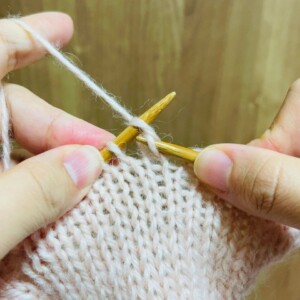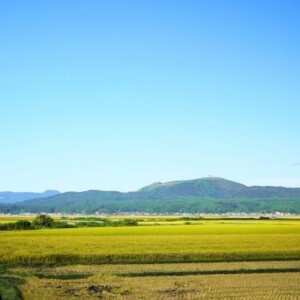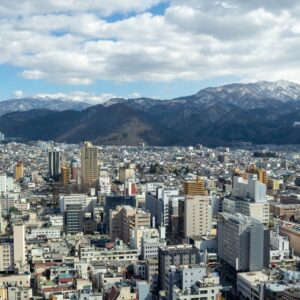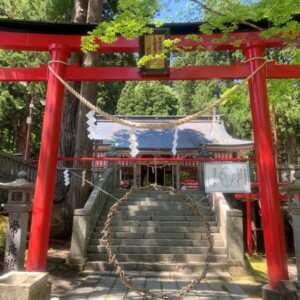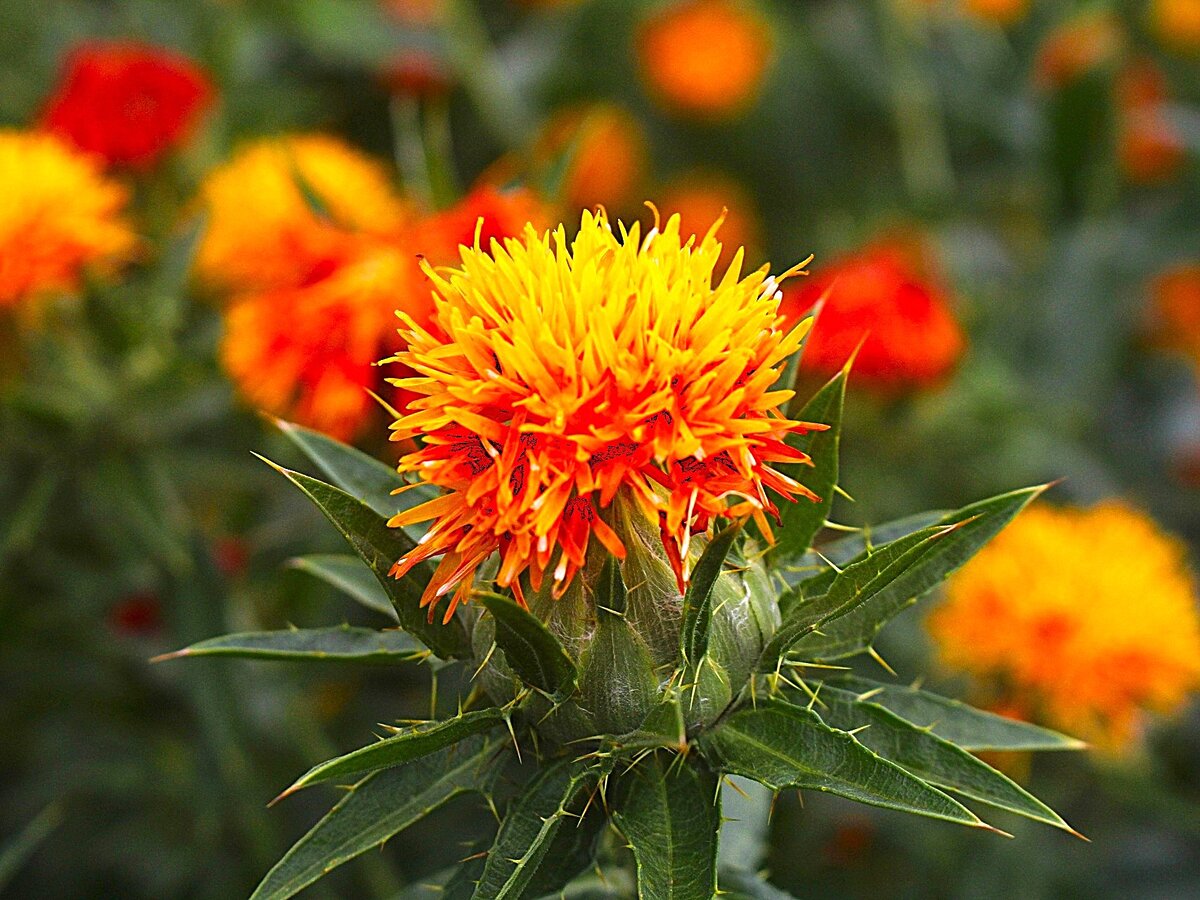
"Mogami safflower" certified as a Japanese heritage and Japanese agricultural heritage [Yamagata Prefecture]
table of contents
- 1 The strong connection between Kyoto and Osaka connected by the Mogami River
- 2 Yamadera, which encouraged safflower cultivation as a local industry
- 3 “Benimochi” is a traditional technique born from the Mogami region, which produces highly pure beni.
- 4 Matsuo Basho was moved by the safflower in the Mogami region and was fascinated by the scenery.
- 5 Safflower Agricultural House, former Kashiwakura Family Housing
- 6 Sabana Agricultural House, former Abe family residence and mansion
- 7 “Kahoku Town Benihana Museum (formerly Hori Yoneshirobei House)” is located in a building owned by a wealthy merchant.
- 8 The sightseeing base in Yamagata City is the former Benihana merchant's house, ``Yamagata Marugotokan Beni no Kura (former Hasegawa family)''
- 9 "Mogami safflower" has declined since the Meiji period
- 10 Traditional techniques of safflower cultivation and dye making recognized as Japanese agricultural heritage
``Safflower'' has been cultivated since ancient times as a raw material for dyeing ``red'' and ``yellow.''
In addition, oils (safflower oil/benibanayu/safflower oil) can be removed from the seeds.
Safflower, cultivated in Japan, is mainly used as a dye, but when viewed worldwide, it is overwhelmingly grown as a raw material for safflower oil. Most of Japan's safflower oil is also imported from the United States.
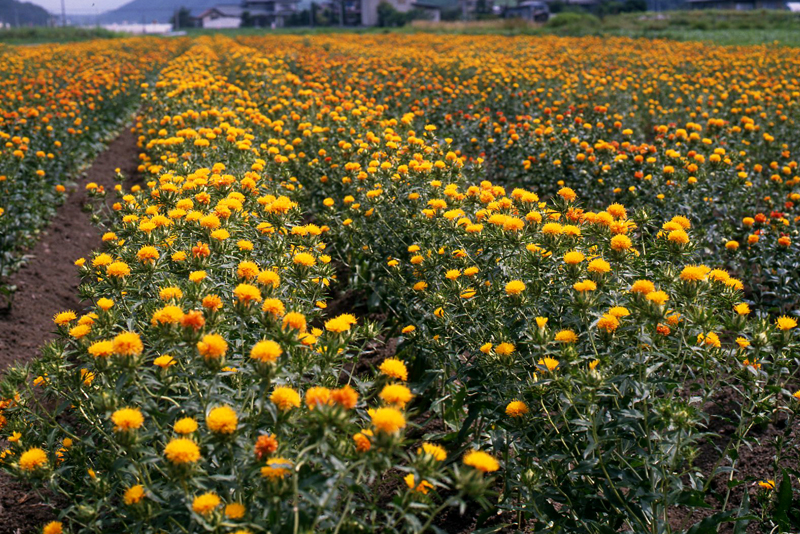
The origin of safflowers is unknown, but safflower pigments are found in the garments worn by Egyptian mummies, about 2,500 years before their origin.
It is believed to have been introduced to Japan from Central Asia through China, and what appears to be safflower pollen and pigments have been discovered in the ruins of Makimukui (Sakurai City, Nara Prefecture) from the third generation, and in the 6th century Fujinoki Kofun (Ikarugacho, Nara Prefecture).
Since safflowers are planted in relatively warm and dry areas such as Central Asia, they are resistant to high temperatures and were first cultivated widely in Japan from southern Japan to Kanto.
It is said that cultivation began in Yamagata Prefecture in the Muromachi period, and from around the middle of the Sengoku period, when cultivation methods to avoid winter were established, the Mogami River basin area of Yamagata Prefecture (hereinafter referred to as Mogami area/part of the current Mogami region, Murayama region, and Okitama region) has become Japan's representative production areas.
The strong connection between Kyoto and Osaka connected by the Mogami River
The red dye obtained from ``safflower'' is indispensable as beni, which is used in Nishijin textiles in Kyoto and in cosmetics. From the Edo period onwards, dyes made from safflower in the Mogami area were recognized as being of the highest quality, and were hailed as the brand name we now know as ``Mogami safflower.''
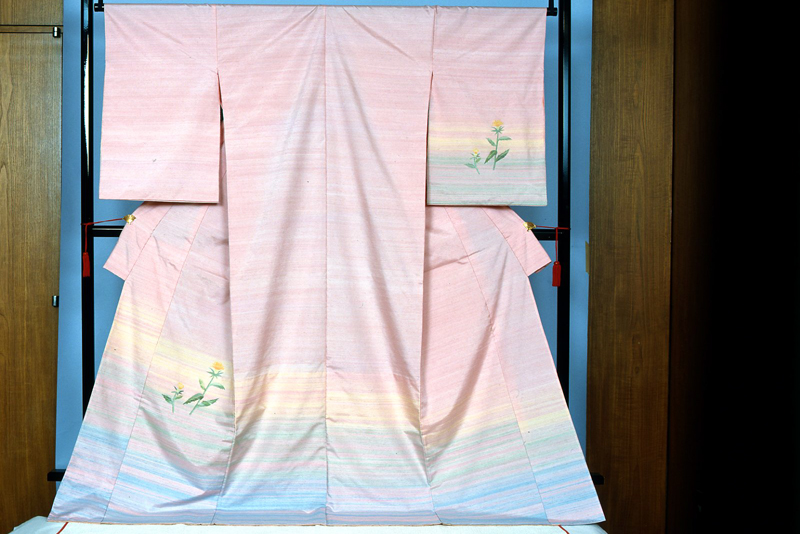
Why was safflower from the Mogami area of Yamagata Prefecture distributed in Kyoto and Osaka?
There are several factors to this.
First, Omi merchants . Omi merchants were based in the Omi region on the eastern shore of Lake Biwa, and were merchants who traveled all over the country to collect goods and brought them to Kyoto and Osaka, and the Sea of Japan side by Kitamaebune , bringing back a variety of products from the Tohoku region and Hokkaido.
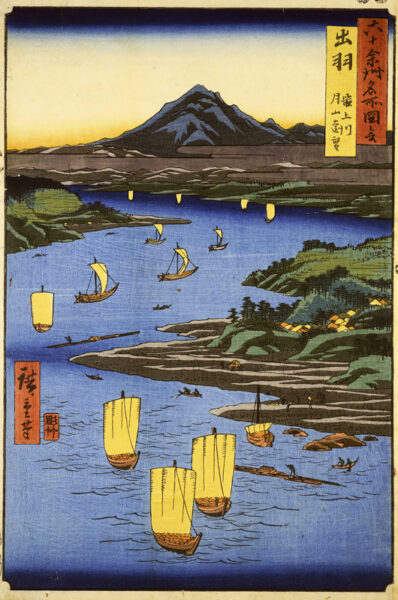
Sakata (Sakata City, Yamagata Prefecture) is the port where Kitamaebune ships stop at, and it is located at the mouth of the Mogami River. The cultivation area of safflower spread in the middle reaches of the Mogami River, and the safflower was transported to the Kansai region via Sakata.
The Yamagata clan, which ruled the Mogami region, invited Omi merchants visiting Sakata to Yamagata, where Yamagata Castle is located, and gave them preferential treatment by giving them land. ``Mogami Benihana'' may not have brought prosperity to the Mogami area if it were not for the Mogami River.
Yamadera, which encouraged safflower cultivation as a local industry

Another reason why "Mogami safflower" soared to its peak was the existence of "Yama-dera Temple."
The "San Temple" also known as Risshakuji" is an ancient temple opened by Jikaku Daishi Ennin in 860, but for Omi merchants it was a Tendai sect temple, the same as the worshiped Hiei Mount Enryakuji. The Omi merchants had no resistance to opening their store in Yamagata, which was also the corner town of Tateishiji.
Together with the Yamagata Domain, Tateishiji also encouraged the cultivation of safflowers to support the lives of many followers and surrounding people. It is said that in the late Edo period, the Mogami area accounted for about half of the national production. Moreover, the quality of the red produced from safflower was amazing, so prices rose, and it was so expensive that it was said to be "100 times the rice and ten times the gold."
Omi merchants, merchants in Yamagata who were involved in them, and even farmers who extracted beni from safflower made a lot of money, and the ``safflower bubble'' continued until the end of the Edo period.
“Yamadera and Safflower” has been certified as a Japanese heritage site as “safflower culture supported by Yamadera.”
Hojuzan Risshakuji Temple<Information>
- Facility name: Hojuzan Risshakuji Temple (Mountain Temple)
- Address: 4,456-1 Yamadera, Yamagata City, Yamagata Prefecture
- Phone number: 023-695-2843
- Entrance fee: Adults 300 yen, Junior high school students 200 yen, Children (4 years old and over) 100 yen
- Entry time: 4/1-10/31/8:00-16:00, 11/1-11/30/8:00-15:30, 12/1-3/31/8:00-15:00
- URL: Risshokuji Temple
Google Map
“Benimochi” is a traditional technique born from the Mogami region, which produces highly pure beni.
The red dye from safflower is extracted by picking the flowers.
Safflowers contain red pigments (cartamine) and yellow pigments (safflower yellow/safromin) , and in Mogami safflower, only red pigments are used.
The red pigment contained in safflower is only about 1% , so extraction takes a lot of effort and time.

How to extract the red pigment from ``safflower''
- wash the picked flowers
- Lightly squeeze it, put it in an airtight bag, leave it overnight, then take it out and grind it.
- The ground material is squeezed into a round mochi shape and dried in the shade for 7 to 10 days to make "bemochi".
- Put the red mochi in a cotton bag and let it brew overnight.
- The yellow pigment dissolves into the water, turning it yellow, so squeeze the bag, replace it with clean water, and soak for about 5 hours. After 5 hours, shake the bag and put it back in clean water.
- Repeat this three times a day for about a week and the process is complete when the water becomes clear.
- The red mochi is dried with the yellow pigment completely removed, dissolved in alkaline lye, and then acidic plum vinegar is added to precipitate it, completing the red color.
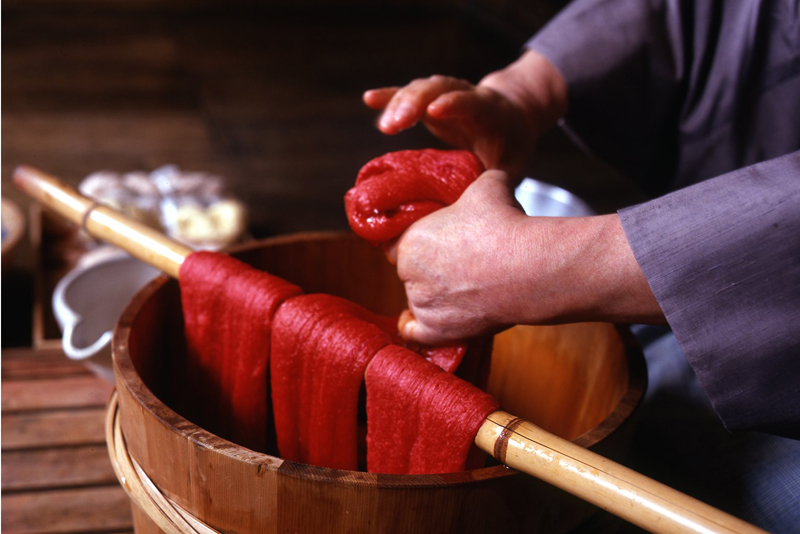
Matsuo Basho was moved by the safflower in the Mogami region and was fascinated by the scenery.
From Naruko Onsen (Osaki City, Miyagi Prefecture), Matsuo Basho passes through Shitomae no Seki near the border and enters Dewa Province (Yamagata Prefecture).
See the beautiful safflower fields in Shimooginoto, Tendo City
“Beni flowers with eyebrows in the air”
(When I look at the red flowers, I feel a sense of charm that reminds me of the eyebrow sweepers women use for makeup.)
I leave behind this phrase:
After that, I headed to Yamadera and the sound of cicadas echoed in the quiet and beautiful scenery.
“Silent pod, the voice of cicadas penetrating the rocks”
With this in mind, we headed to Oishida (Oishida/Oishida Town), where the port is located, in order to take a trip down the Mogami River, where we enjoyed a trip down the Mogami River during the rainy season when there was a lot of water.
“The Mogami River gathers the rain in May and rises early”
The scene from this period is shown in the ``Oku no Hosomichi Folding Screen'' (National Important Cultural Property/Designated Name: ``Oku no Hosomichi Folding Screen'' painted by Yosa Buson (1716-1783) in 1779, which is housed in the Yamagata Museum of Art. (Yosa Buson's handwriting: 6 folding screens with a yearbook written in 1989) and two works by Yokoyama Kazan (1784-1837) depicting the making of safflower. You can see it on the "Safflower Byobu" (a tangible cultural property designated by Yamagata Prefecture).
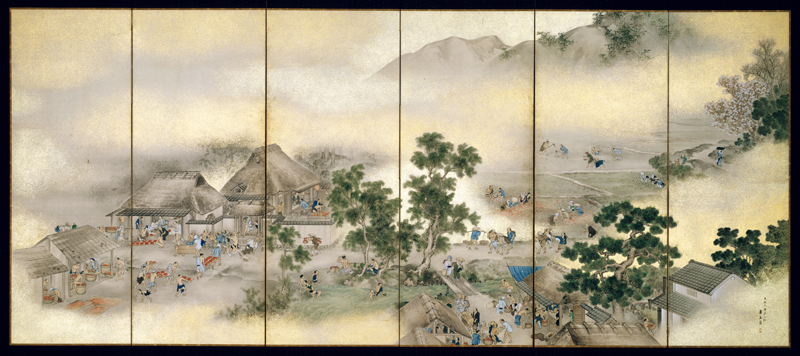
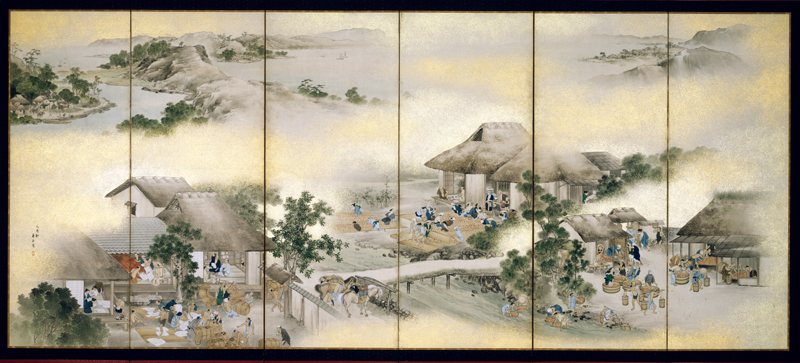
The Yamagata Museum of Art is a private art museum that opened in 1964 and conducts research, collects, stores, and exhibits works centered on Japanese and Oriental art, local art, and French art.
Yamagata Museum of Art<Information>
- Facility name: Yamagata Museum of Art
- Address: 1-63 Otemachi, Yamagata City, Yamagata Prefecture
- Phone number: 023-622-3090
- Opening hours: 10:00-17:00 (admission until 16:30)
- Closed: Mondays, December 28th - January 3rd
- Admission fee: General 800 yen, High school and university students 400 yen, Elementary and junior high school students 200 yen
- URL: Yamagata Museum of Art
Google Map
Safflower Agricultural House, former Kashiwakura Family Housing
The former Kashiwakura Family Housing (Nakayama Town) is the main residence of the Kashiwakura Family, a landowner who is the representative of the Murayama region where safflower cultivation is popular.It has a site area of approximately 7,600 m2 (2,300 tsubo), and approximately 1,412 m2 (427 tsubo), including the main building and three buildings.

The oldest Buddhist zodiac storehouse was built in 1770 (Meiwa 7), with the rest being built from the early Meiji period to the end of the Meiji period. A national important cultural property.
Former Kashiwakura family residence <Information>
- Facility name: Former Kashiwakura family residence
- Address: Oaza 8, Nakayama-cho, Higashimurayama-gun, Yamagata Prefecture
- Phone number: 023-687-1778
- Opening days: Saturdays, Sundays, holidays
- Opening hours: 10:00-16:00 (last entry: 15:30)
- Closed: Monday to Friday, winter (December to February)
- Admission fee: General 500 yen (free for junior high school students and under)
- URL: Former Kashiwakura family residence
Google Map
Sabana Agricultural House, former Abe family residence and mansion
The ``Former Abe Family Residence and Mansion'' (Kahoku Town) is a valuable building that was built at the end of the Edo period and retains much of its appearance as a wealthy farmer's mansion that thrived on safflower and rice cultivation. A tangible cultural property designated by Kahoku Town.
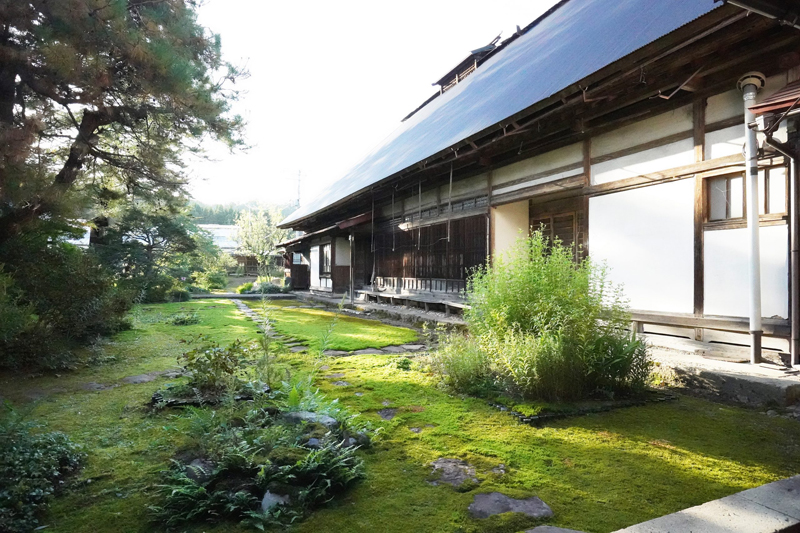
Former Abe family residence and mansion <Information>
- Facility name: Former Abe family residence and mansion (a wealthy farmer's house/Abe Gonnai family)
- Address: 889 Yachimi, Kahoku-cho, Nishimurayama-gun, Yamagata Prefecture
- Phone number: 0237-72-3613 (Abe Gonnai Family Preservation Society)
- Opening days: Open for a limited time (please inquire)
Google Map
“Kahoku Town Benihana Museum (formerly Hori Yoneshirobei House)” is located in a building owned by a wealthy merchant.
The "Kahoku Town Safflower Museum (formerly Horime Shirobei Family)" is a museum that uses the mansion of the Horime Shirobei family, one of the most wealthy merchants in Kawahoku Town, where safflower cultivation is popular. The tatami-makura, the musha-makura, and the goshuinmakura were built from the mid- to late Edo period.
The building displays luxurious furnishings that are typical of wealthy merchants. The large lot has safflowers planted and a walkway is well maintained, and at the newly built "Red House", you can see kimonos dyed with safflowers and Hina dolls ordered from Kyoto. You can also try dyeing safflower.
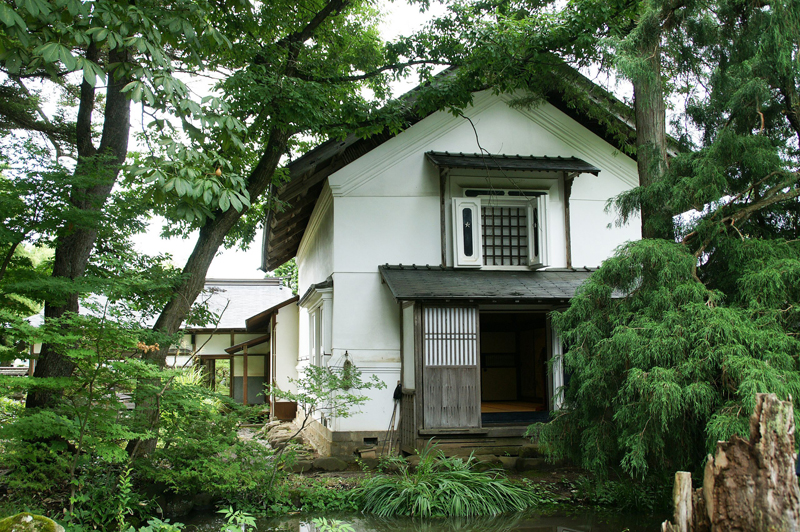
Kahoku Town Safflower Museum<Information>
- Facility name: Kahoku Town Safflower Museum
- Address: 1143 Yachibo, Kahoku-cho, Nishimurayama-gun, Yamagata Prefecture
- Phone number: 0237-73-3500
- Opening hours: March - October / 9:00 - 17:00 November - February / 9:00 - 16:00
- Closed: 2nd Thursday of the month (the following day if it is a public holiday), December 29th to January 3rd
- Admission fee: 400 yen for adults, 150 yen for high school students, 70 yen for elementary and junior high school students
- Safflower dyeing experience: From 1,600 yen (admission fee included)
- URL: Kahoku Town Safflower Museum
Google Map
The sightseeing base in Yamagata City is the former Benihana merchant's house, ``Yamagata Marugotokan Beni no Kura (former Hasegawa family)''
Yamagata Marugotokan: Beni no Kura (formerly Hasegawa Family) (Yamagata City) is a tourist base located along Tokamachi Street, where old storehouses are lined with buildings, and the building is the storehouse and main house of the Hasegawa Family, who was a safflower merchant in the Yamagata Domain.
The building in the Edo period was burned down in a major fire that occurred in 1894 (Meiji 27) and was rebuilt in 1901 (Meiji 34). Currently, the bar is a restaurant, the main house and tatami room are soba shops, and the other bars are tourist information centers and souvenir shops.
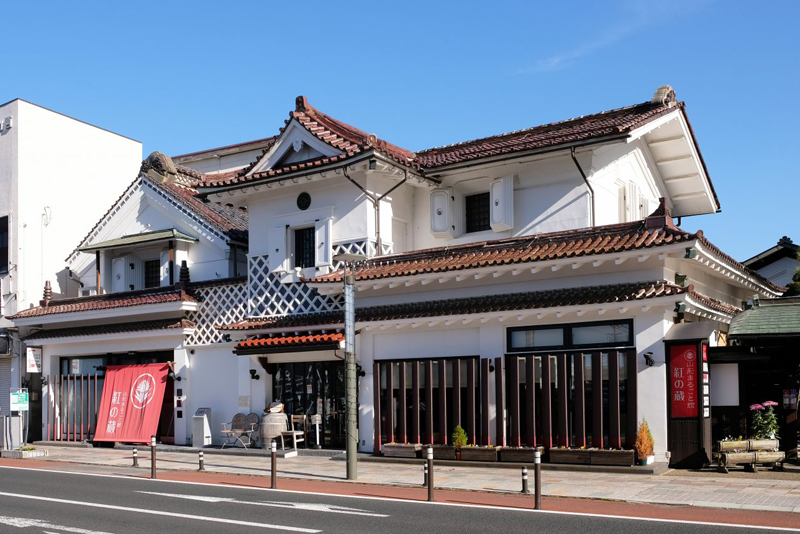
Yamagata Marugotokan Beni no Kura<Information>
- Facility name: Yamagata Marugotokan Beni no Kura
- Address: 2-1-8 Tokamachi, Yamagata City, Yamagata Prefecture
- Phone number: 023-679-5101
- Business hours: 10:00-18:00 (subject to change depending on each store and season)
- Closed days: January 1st to 3rd (subject to change depending on each store)
- URL: Yamagata Marugotokan Beni no Kura
Google Map
"Mogami safflower" has declined since the Meiji period
"Mogami safflower" was highly prized during the Edo period and created many wealthy merchants and farmers, but its popularity rapidly declined when cheap alternative dyes were imported in the early Meiji period. Furthermore, chemical dyes took a toll, and production almost ceased.
After that, safflower cultivation has been handed down in small ways, but it finally began to move towards a revival after World War II. In the 1960s, major cosmetics manufacturers focused on the appeal of Mogami Sabana, and signed a contract with the manufacturer, resulting in a new expansion of the cultivation area.
However, this did not last long and production would decrease once the cosmetics manufacturer stopped contract cultivation, and now it is produced to meet the demand of some genuine dyers and plant dye enthusiasts.
Traditional techniques of safflower cultivation and dye making recognized as Japanese agricultural heritage
Yet Yamagata Prefecture is the highest in Japan in terms of safflower production, and in the Murayama region, there are widespread safflower blooming landscapes.
The safflower dye making technology cultivated over 450 years is a valuable agricultural technology in Japan, and it cannot be stopped.
Yamagata is a link between history and tradition, and a Japanese agricultural heritage and is now moving towards protection.
Japanese Agricultural Heritage “Yamagata’s Mogami Safflower, Connected with History and Tradition”
- Phone number: 023-630-2221
- Constituent municipalities: Yamagata Prefecture, Yamagata City, Yonezawa City, Sakata City, Tendo City, Yamabe Town, Nakayama Town, Kahoku Town, Shirataka Town
- Official URL: "Mogami Sabahana" Japanese Agricultural Heritage





![Has even a wealthy merchant with more wealth than the feudal lord appeared? Sakata's port that was moistened by Kitamae Ship [Yamagata Prefecture] Kitamae boat at Hiyoriyama Park](https://jp.neft.asia/wp-content/uploads/2023/04/4631946_m-150x150.jpg)
![[Yamagata Prefecture] Walking through Tokamachi and Nanokamachi in Yamagata City, where the scent of the Edo period remains Yamagata city from Kasumi Castle Central Observation Room](https://jp.neft.asia/wp-content/uploads/2023/09/26303875_m-150x150.jpg)
![[Yamagata Prefecture] Tsuruoka's silk fabric industry created by changing swords to hoes. 5182039_m](https://jp.neft.asia/wp-content/uploads/2023/02/5182039_m-150x150.jpg)
![A tour of the 33 remaining Kannon in Minami Aizu. "Thirty-three Kannon" certified as a Japanese Heritage Site [Fukushima Prefecture] 11_MG_9631](https://jp.neft.asia/wp-content/uploads/2022/11/11_MG_9631-150x150.jpg)
![[Aizuwakamatsu City, Fukushima Prefecture] “Aizu Thirty-Three Kannon” tours around the Kitaaizu area, centering on Aizuwakamatsu 25949683_m](https://jp.neft.asia/wp-content/uploads/2023/02/25949683_m-150x150.jpg)
![The Golden Legend of Mutsu Province | The Koganeyama Gold Mining Site in Wakuya Town, said to be Japan's first gold-producing region [Miyagi Prefecture] 32555826_m](https://jp.neft.asia/wp-content/uploads/2025/10/32555826_m-150x150.jpg)
![[Yamagata Prefecture] The roots of Yamagata Hanagasa are in Obanazawa! “Yasshomakasho” is the chant of workers born from the embankment construction work. Yamagata Hanagasa Festival](https://jp.neft.asia/wp-content/uploads/2024/07/2594950_m-150x150.jpg)
